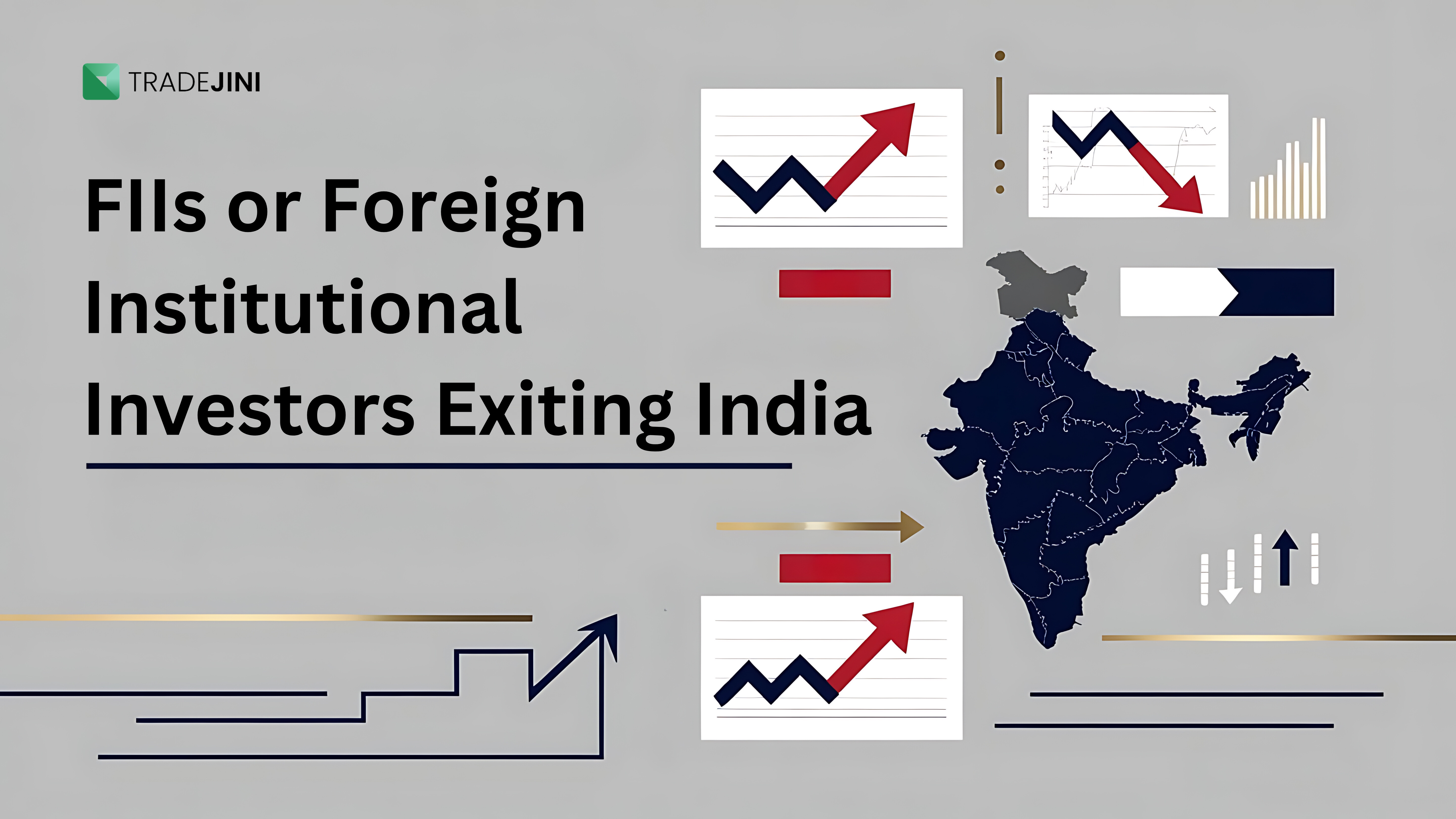FIIs, or Foreign Institutional Investors, play a significant role in the Indian economy as they bring in money and improve market liquidity, eventually driving business growth. But in recent weeks, we have witnessed a significant FII outflow from the Indian market. But why this shift? Is it going to impact the Indian equities?
Let’s find out! Read on to understand the situation by looking at both global and domestic factors for the recent FII outflow. But first, let’s learn more about FIIs.
What Are FIIs?
FIIs, or Foreign Institutional Investors, are large international institutions or companies that invest in India’s financial markets. They can be mutual funds, investment banks, pension funds, or hedge funds. FIIs play a significant role in the Indian financial markets as their investments can impact- capital flow, market liquidity, stock prices, and overall economic growth.
But what happened with FIIs in India recently?
FIIs Outflow From Indian Markets
In October 2024, FIIs sold Indian stocks worth a record ₹1,14,445.89 crore, which is the highest amount ever in a month. The highest net sales by FIIs in 2024 before this was in May with ₹42,214 crore sold.
Before October 2024, the biggest FII outflow was seen in March 2020 during the COVID crash, when they sold Indian equities worth ₹65,816.70 crore and Nifty fell by more than 20%. However, this time the fall has been minimal, thanks to domestic investors (DIIs) buying worth ₹1,07,254.68 crore in October 2024.
This F11 outflow- DII inflow trend continues in November as well. In the first seven trading days for November (up to 11/11/2024), FIIs have sold Indian equities worth ₹22,156.41 crore, and DIIs have bought equity worth ₹16,040.81 crore.
Let’s find out the potential reasons behind FIIs exiting India.
Why Are FIIs Exiting India?
Here are some of the global and domestic factors behind the exit of FIIs from the Indian market:
Global Economic Factors
A. China’s Economic Actions
Recently, China has taken several steps to boost its economy, whether it is cutting interest rates or increasing government spending. It has also eased monetary policies to make the stock market more appealing to global investors. As a result, FIIs have moved their investments from India to China.
B. US Economic Conditions
The United States has seen an increase in bond yields and this makes US markets more attractive to global investors. Consequently, FIIs are choosing to invest their money in US government bonds or equities that offer better returns compared to markets like India.
Domestic Economic Factors
A. High Stock Valuations in India
Indian stocks have been trading at higher-than-usual valuations. Before the recent market connection, the Nifty50 index had a Price-to-Earnings (PE) ratio of over 24. Now, this is above the Indian market median PE of 21.9, making Indian stocks seem overpriced when compared to other emerging markets.
B. High Inflation and Weak Earnings
In September 2024, India’s inflation rate surged to 5.49%, which was the highest in the year. Now when inflation is high, it can decrease purchasing power and hurt corporate profits. This combination of high inflation and weak earnings made investors cautious about the future potential of Indian companies. As a result, FIIs chose to sell their investments in India.
C. Weak Q2 FY25 Corporate Earnings
In Quarter 2 of FY25, many Indian companies have shown slower-than-expected earnings growth, raising concerns about India’s growth prospects.
Geopolitical Factors
There are also several ongoing global tensions behind the exit of FIIs. This may include the ongoing US-China trade issues. Hence, FIIs, who are sensitive to risks, have been reducing their exposure to emerging markets like India.
Impact of FII Outflows on the Indian Stock Market
Now what happens with this extreme outflow of FIIs? Here are some of the potential impacts of the FII outflow on the stock market:
Increased Market Volatility
FIIs account for a significant portion of the trading volumes in the Indian stock markets. So, their exit has led to higher volatility along with a sharp decline in stock prices.
Downward Pressure on Stock Prices
The massive FII outflow has caused a sell-off in stocks, especially in blue-chip and large-cap stocks where FIIs hold higher stakes. This has led to a fall in major market indices and has impacted the overall investor sentiment.
Weakening of the Indian Rupee
The recent FII outflow has translated to higher demand for the US Dollar since investors convert their Rupee holdings to Dollars while liquidating their investments. This has led to the depreciation of the Indian Rupee, making imports more expensive and adding to the economy’s inflationary pressures.
Reduced Liquidity
Undoubtedly, the exit of FIIs would reduce liquidity in the Indian stock market. With fewer buyers and sellers, it would become harder for investors to make large trades without influencing the prices of stocks.
How Domestic Institutional Investors (DIIs) Are Helping
As mentioned earlier, despite the exit of FIIs, Domestic Institutional Investors (DIIs) such as Indian mutual funds and insurance companies are helping in the stabilisation of the miarket. In October 2024, DIIs bought Indian equities worth around ₹1.07 lakh crore. This support has not only prevented a collapse in the stock market but also balanced the selling with buying.
What Should Investors Do?
When FIIs exit, they may create a panic situation due to market volatility. If you are a retail investor, worry not! You can consider focusing on long-term goals and use SIPs to benefit from rupee-cost averaging during volatile periods. Apart from this, you can focus on fundamentally strong stocks. With this market dip, you can get the opportunity to buy these stocks at discounted prices.
Conclusion
This recent exit of FIIs may look worrying, but it also offers long-term investors numerous opportunities to invest in the stock market. These changes can bring ups and downs, but if you stay focused on your goals, you can certainly make the most of it.
Download the Tradejini’s CubePlus app and manage your investments like a pro. With our expert insights and technical support, you understand the market shifts easily.



